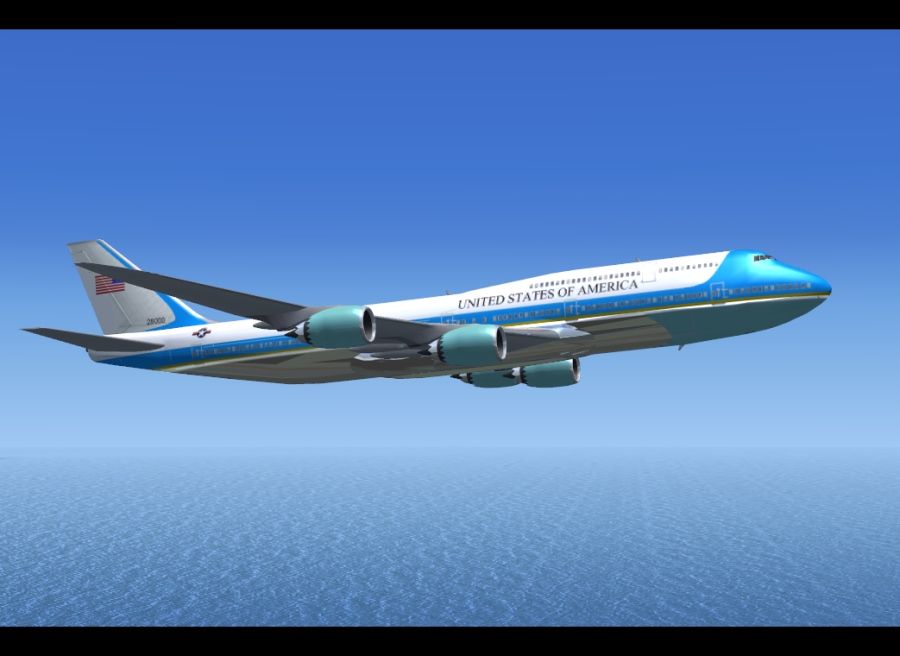A Life Aloft
Well-Known Member
(Reuters) – "The U.S. Air Force said on Wednesday it would use Boeing’s commercial 747-8 airliner to replace its current fleet of two Air Force One presidential aircraft, one of the most visible symbols of the United States.
“The Boeing 747-8 is the only aircraft manufactured in the United States (that) when fully missionized meets the necessary capabilities established to execute the presidential support mission,” said Air Force Secretary Deborah James in a statement.
Boeing welcomed the Air Force’s decision to skip a competition and opt for the 747-8, citing its 50-year history of building presidential aircraft.
The Air Force said it intended to award a sole source contract to Boeing, but they must still negotiate a contract and the modifications needed to adapt the jet for presidential use.
The Air Force now operates two VC-25s, specially configured Boeing 747-200Bs. Details about the new contract, including cost, were not released.
It said it planned to purchase enough of the technical baseline to permit competition for maintenance during the plane’s planned 30-year life.
James said the Air Force One program would use proven technologies and commercially certified equipment to keep the program affordable.
The Air Force decision was widely expected since the only other suitable four-engine jet is the A380 built by Airbus in Toulouse, France.
The 747-8 is the only four-engine commercial jet Boeing makes, providing an extra margin of flight safety over the more standard twin-engine planes.
The double-decker 747 entered service in 1970, undergoing a major overhaul in 2012, with new engines and a longer fuselage."
The Air Force has budgeted $1.65 billion between 2015 and 2019 for the new jets.
And:
Boeing ended the year with $502 billion in its total production backlog, up from $409 billion at the end of Q3, helped by $152 billion of net orders during the year.
Commercial aircraft deliveries rose 13% to 195 during the quarter as Boeing delivered 126 narrow-body 737s, up from 110 in the year-ago-quarter, and delivered 35 787 Dreamliners, up from 25 a year ago. Boeing gets paid when it makes deliveries.
Looking to 2015, the company sees core EPS of $8.20 and $8.40, below the $8.64 analysts are expecting. It sees revenue of $94.5 and $96.5 billion, above the consensus view of $93.25 billion, on commercial deliveries of 750 to 755 planes.
Boeing anticipates operating cash flow of more than $9 billion this year vs. $8.86 billion in 2014.
McNerney said on the company conference call that he expects 40-60 orders per year for the 777, helping prop up the production line as the company switches to the new 777X.

“The Boeing 747-8 is the only aircraft manufactured in the United States (that) when fully missionized meets the necessary capabilities established to execute the presidential support mission,” said Air Force Secretary Deborah James in a statement.
Boeing welcomed the Air Force’s decision to skip a competition and opt for the 747-8, citing its 50-year history of building presidential aircraft.
The Air Force said it intended to award a sole source contract to Boeing, but they must still negotiate a contract and the modifications needed to adapt the jet for presidential use.
The Air Force now operates two VC-25s, specially configured Boeing 747-200Bs. Details about the new contract, including cost, were not released.
It said it planned to purchase enough of the technical baseline to permit competition for maintenance during the plane’s planned 30-year life.
James said the Air Force One program would use proven technologies and commercially certified equipment to keep the program affordable.
The Air Force decision was widely expected since the only other suitable four-engine jet is the A380 built by Airbus in Toulouse, France.
The 747-8 is the only four-engine commercial jet Boeing makes, providing an extra margin of flight safety over the more standard twin-engine planes.
The double-decker 747 entered service in 1970, undergoing a major overhaul in 2012, with new engines and a longer fuselage."
The Air Force has budgeted $1.65 billion between 2015 and 2019 for the new jets.
And:
Boeing ended the year with $502 billion in its total production backlog, up from $409 billion at the end of Q3, helped by $152 billion of net orders during the year.
Commercial aircraft deliveries rose 13% to 195 during the quarter as Boeing delivered 126 narrow-body 737s, up from 110 in the year-ago-quarter, and delivered 35 787 Dreamliners, up from 25 a year ago. Boeing gets paid when it makes deliveries.
Looking to 2015, the company sees core EPS of $8.20 and $8.40, below the $8.64 analysts are expecting. It sees revenue of $94.5 and $96.5 billion, above the consensus view of $93.25 billion, on commercial deliveries of 750 to 755 planes.
Boeing anticipates operating cash flow of more than $9 billion this year vs. $8.86 billion in 2014.
McNerney said on the company conference call that he expects 40-60 orders per year for the 777, helping prop up the production line as the company switches to the new 777X.

Last edited:

